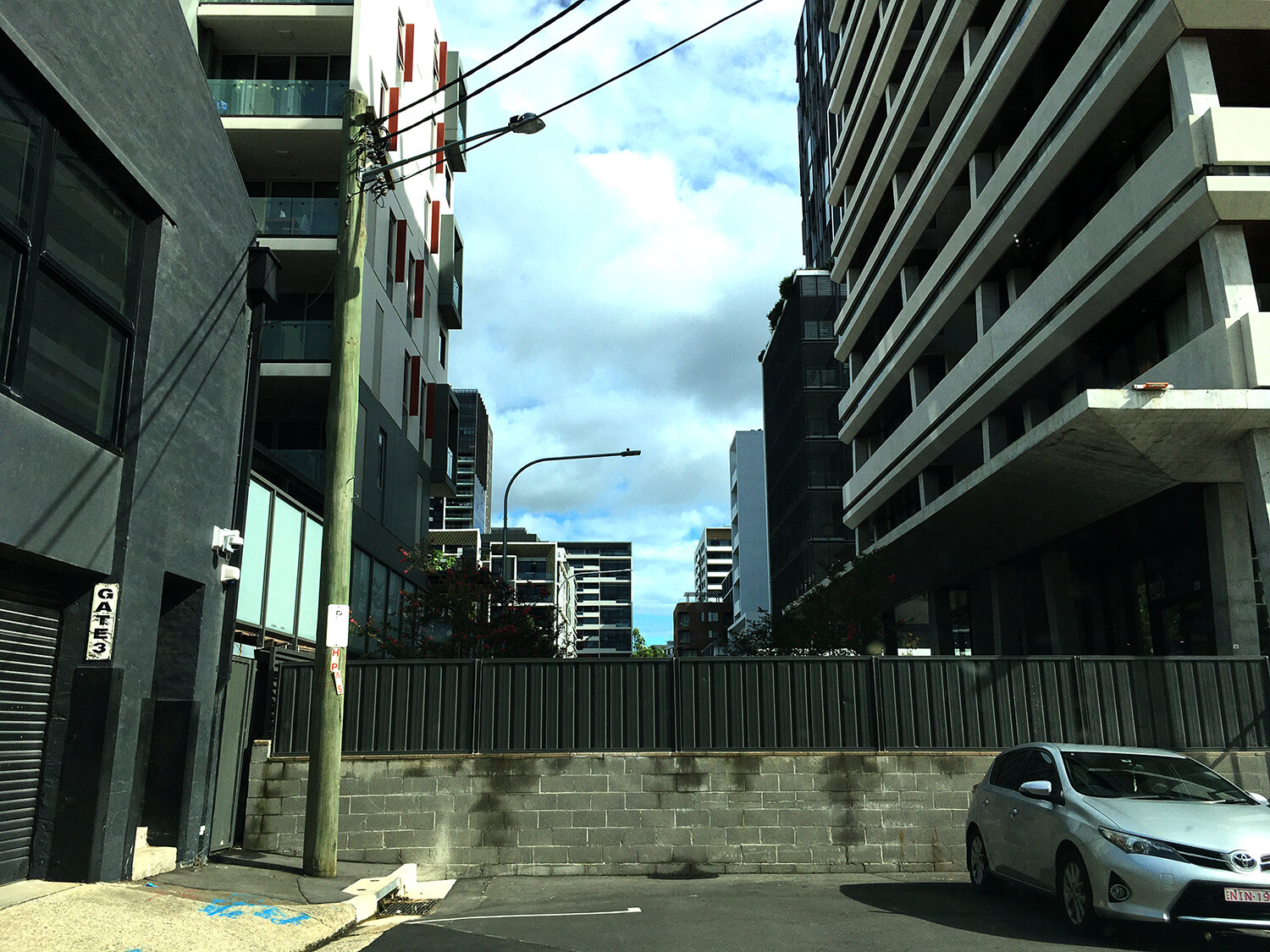Ada Place, Pyrmont on Saturday, 25 April 2020
Today is Anzac Day, no marches. In some suburbs people held the dawn service in front of their houses, each on their own front lawn or porch, even playing “The Last Post”. Some lit a candle at their open window. All this I learned from Facebook, Instagram and TV news as nothing happened in my neighbourhood. But then again I wasn’t up yet to see it.
Ada Place is a narrow lane off Pyrmont Bridge Road, overshadowed by high apartment buildings on each side. They were probably built when Pyrmont was being redeveloped in the late 1990s.
Judging from old photos I’ve seen about Sydney, I imagine Ada Place would have looked quite grim in previous times. Maybe there were workers’ cottages or warehouses on this street when Pyrmont was an operating dock area. It still looks grim - in a bland, new way. But somehow it retains that harbourside ambience, especially at the end towards Pyrmont Bridge Road where I can see old buildings in the sunshine on the other side.
Pyrmont Bridge is normally a busy road. It leads to several thoroughfares and the Anzac Bridge. Today there is hardly any traffic. There is a silence, like a hush in the air.
Back in Ada Place, an older and a younger man are carrying furniture out from a flat into the street. A chair and a cupboard are already there. A dog is whimpering after them. “Come inside, Winston”, I hear a woman’s voice calling. The flats facing this lane on the lower floors are very dark. I get glimpses of the interior here and there. A politician recently complained about people treating the beach as their back garden, meaning they want to stay and not leave immediately after a swim. (Most beaches, except Bondi, just opened again last week, just for a swim). This politician may have a back garden and more, but the people in Ada Place don’t, not even a ray of sunshine.































































































































































